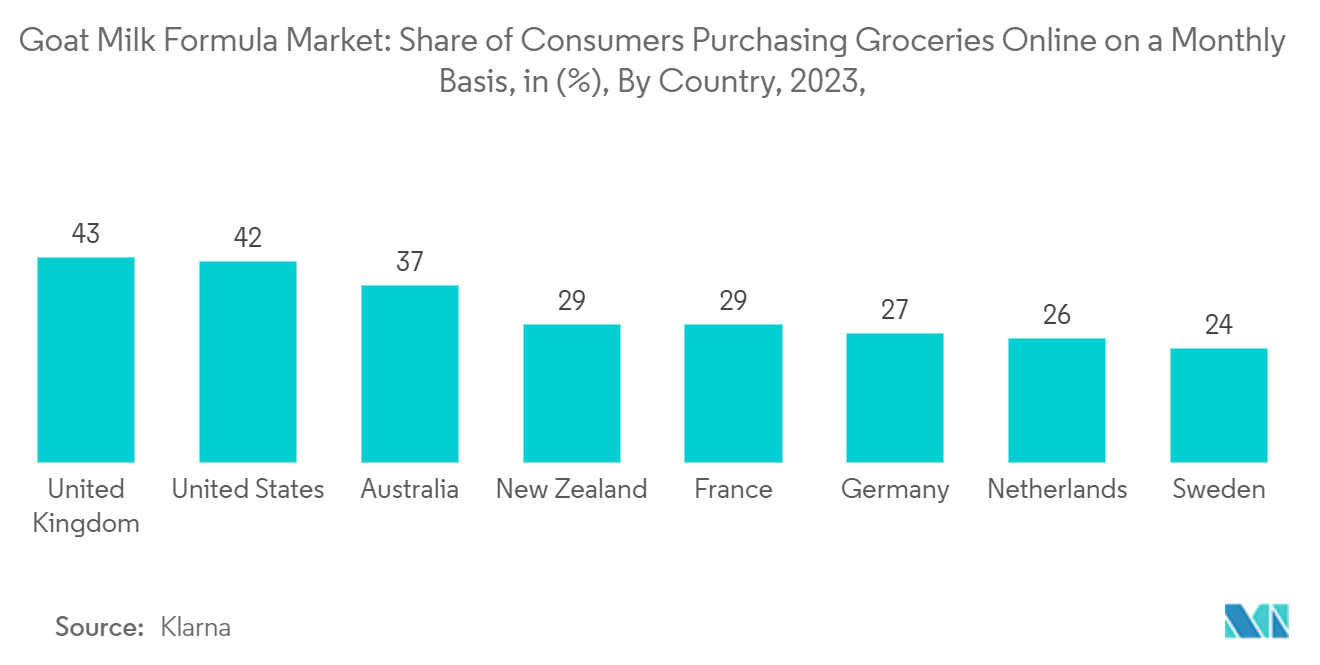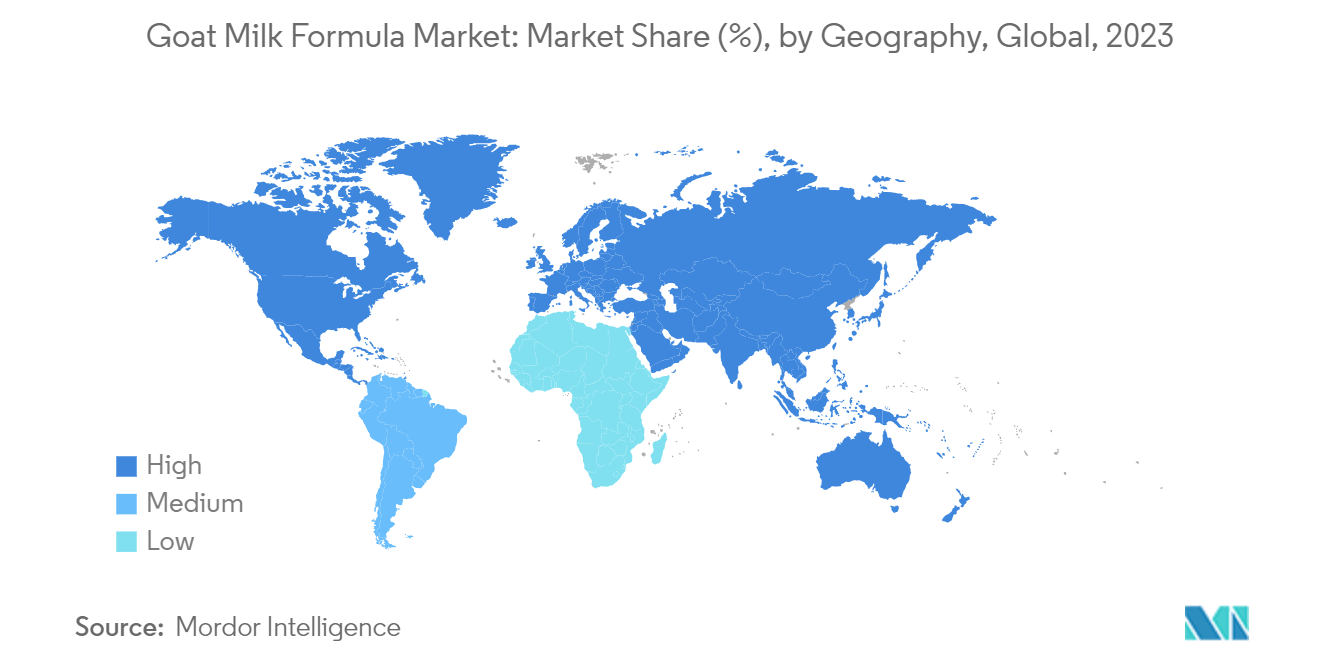Market Trends of Global Goat Milk Formula Industry
Online Retail Channels are Projected to be the Fastest-growing Distribution Channel
Online retailers, unlike traditional brick-and-mortar stores, offer a broader selection of products, catering to niche markets, like goat milk formula, allowing parents to find the specific formula their children need without geographical limitations. Online platforms are also trusted by parents as they provide detailed product descriptions, nutritional information, and customer reviews, helping parents make informed decisions based on their children’s needs. Many online retailers offer subscription services for daily grocery products, including goat milk formula, ensuring a steady supply delivered directly to one's doorstep. This eliminates the worry of running out and last-minute store trips.
A survey conducted in India by LocalCircles in February 2022 revealed that the most important criteria for online grocery shopping for 28% of respondents included selection and availability, while delivery time and value were viewed as the secondary criteria. In comparison, 8% chose a fast delivery focus when buying groceries online.
Online retailers usually stock a wide variety of brands compared to physical stores, catering to parents seeking specific features like organic ingredients, pre-biotics, or particular protein sources. These platforms bridge geographical gaps, allowing access to international goat milk formula brands that may not be readily available locally. This opens doors for parents who prefer specific brands or formulations from other countries. Moreover, online retailers leverage data to personalize product recommendations for parents based on their baby's age, dietary needs, and previous purchases.

Asia-Pacific Dominates the Goat Milk Formula Market
A significant portion of the Asian population struggles with lactose intolerance. Goat milk contains a different type of sugar than cow's milk, with a smaller lactose molecule, making it easier for some lactose-intolerant babies to digest. Addressing this condition is crucial for overall health as lactose intolerance can lead to digestive discomfort, including bloating and diarrhea, leading parents to choose cow milk alternatives for children.
Asian consumers are increasingly seeking products perceived to offer superior health benefits, leading to higher consumption of goat milk formula boasting higher levels of certain essential nutrients like short-chain fatty acids, casein, which is a type of milk protein that contributes to improved gut health, and pre-biotics, which promote the growth of beneficial bacteria. Countries like Vietnam, Thailand, and Indonesia are witnessing a surge in goat milk formula consumption. Growing awareness of its perceived health benefits and the increasing middle-income group are driving this trend.
Goat milk formula has been popularized and is better recognized by consumers after a decade of growth. More dairy makers are investing in the product, given the increasingly fierce competition in the goat milk formula market. For instance, in January 2022, Orient EuroPharma Group (OEP) launched Karihome goat milk formula in Indonesia, which was approved by the European Food Safety Authority (EFSA). Karihome is an international brand shared by OEP and Hamilton-base Dairy Goat Co-operative (DGC) in New Zealand. Karihome was the first goat’s milk formula in Indonesia, offering a digestive-friendly option for children.


